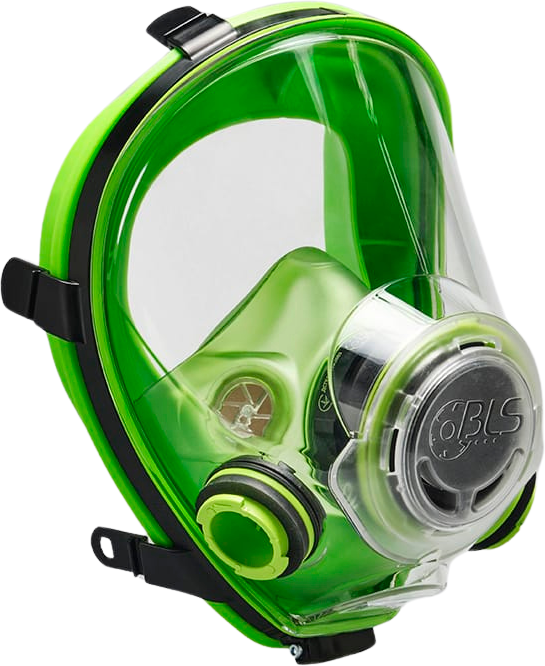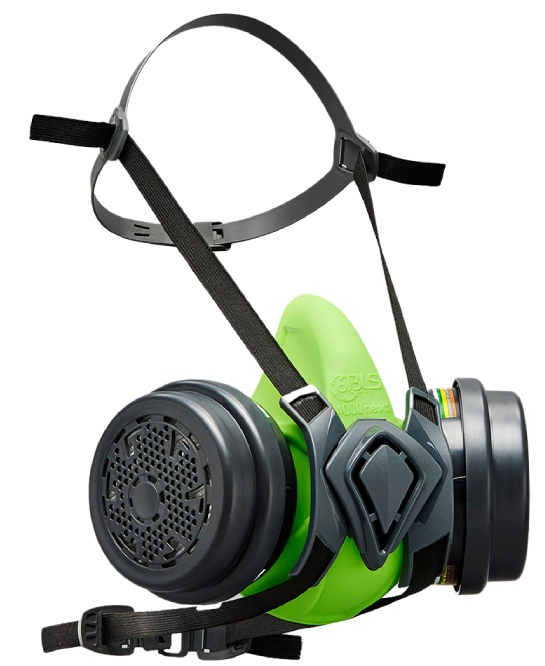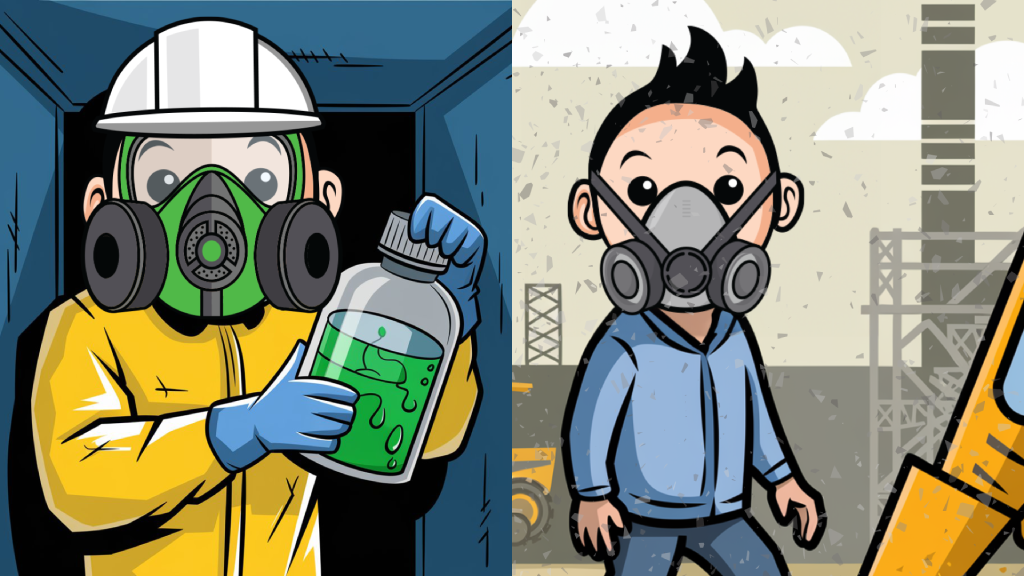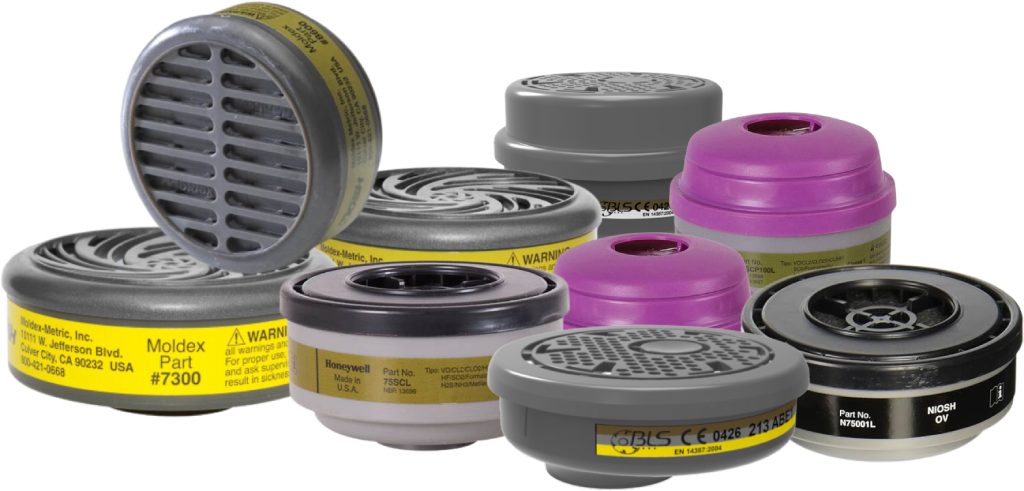
Full Face vs. Half Face Respirators: Which One Suits Your Needs?

Full Face Gas Mask
- BLS Full Face 5700, Silicone

Half Face Gas Mask
- BLS 4000(S) Next Semimaschera Silicone Half Mask
Protecting employees from chemical hazards and airborne contaminants is a top priority for workplace safety. Respiratory protection is an integral part of this, and choosing the right respirator is the key. In Singapore, industries like manufacturing, construction, and chemical processing must decide whether a full-face or half-face respirator best meets their safety needs. While both types feature effective protection, their suitability depends on specific job risks.
In this article, we will compare full-face and half-face respirators to help you make an informed decision for your workplace.
1. Coverage and Protection
A full-face respirator provides comprehensive protection, covering the entire face, including the eyes, nose, and mouth. They are ideal for environments where both inhalation and eye protection are necessary. These include laboratories, chemical plants, and fire-fighting situations.
In contrast, half-face respirators only cover the nose and mouth, protecting workers from inhaling harmful particles, gases, or vapours. They are suitable for environments where eye protection is not required or when workers are wearing separate safety goggles. These respirators are often used in general industrial work, construction, or manufacturing tasks where inhalation protection is the main concern.
In contrast, half-face respirators only cover the nose and mouth, protecting workers from inhaling harmful particles, gases, or vapours. They are suitable for environments where eye protection is not required or when workers are wearing separate safety goggles. These respirators are often used in general industrial work, construction, or manufacturing tasks where inhalation protection is the main concern.
2. Comfort and Fit
While full-face respirators protect wearers in a wider range, they tend to be bulkier and heavier. This often compromises their conform levels for long-term use, especially in environments with lower contamination levels. Chemical plant workers prefer full-face respirators to ensure complete protection. In contrast, construction workers usually opt for half-face ones. The latter is sufficient to protect them against dust and airborne particles.
Lighter and more compact, half-face respirators are a good option for workers exposed to less contamination or airborne hazards. These respirators offer greater comfort for short-term use in industries that require frequent movement, without the added bulk of a full-face model.
Lighter and more compact, half-face respirators are a good option for workers exposed to less contamination or airborne hazards. These respirators offer greater comfort for short-term use in industries that require frequent movement, without the added bulk of a full-face model.
3. Visibility
One key advantage of full-face respirators is their ability to provide a broader field of vision. In hazardous environments, clear visibility allows workers to remain aware of their surroundings, enhancing both safety and efficiency. Equipped with clear lenses to ensure optimal visibility, this type of respirator is crucial for tasks that demand precision — working with intricate machinery or conducting detailed inspections.
Half-face respirators, on the other hand, minimise obstruction to the wearer’s vision. They can promise a clear line of sight for maintenance, assembly work, and other related job scopes. Since they only cover the nose and mouth, they do not interfere with the wearer’s peripheral vision.
Half-face respirators, on the other hand, minimise obstruction to the wearer’s vision. They can promise a clear line of sight for maintenance, assembly work, and other related job scopes. Since they only cover the nose and mouth, they do not interfere with the wearer’s peripheral vision.
4. Suitability for Specific Jobs
Full-face respirators are best suited for jobs that involve exposure to chemical hazards, which potentially risk both the respiratory system and eyes. For instance, laboratory workers or emergency responders may need these respirators to protect against harmful vapours, fumes, or smoke.
For general industrial work, construction, or manufacturing tasks, half-face respirators might be a better fit. In these settings, inhalation protection is prioritised as eye protection is often handled separately with safety goggles.
For general industrial work, construction, or manufacturing tasks, half-face respirators might be a better fit. In these settings, inhalation protection is prioritised as eye protection is often handled separately with safety goggles.
Which Respirator Suits Your Needs?

Ultimately, choosing between a half- and full-face mask and respirators depends on the job responsibilities and specific risks.
The key is to keep your workplace safety equipment aligned with the necessary standards and protection requirements.
If your workers are exposed to chemical hazards that can affect both the respiratory system and eyes, you may want to deploy a full-face mask and respirator. Meanwhile, if inhalation protection is the core focus, a half-face mask and respirator might be more suitable.
If your workers are exposed to chemical hazards that can affect both the respiratory system and eyes, you may want to deploy a full-face mask and respirator. Meanwhile, if inhalation protection is the core focus, a half-face mask and respirator might be more suitable.

Cartridges protect against specific chemical vapours and gases, while filters capture particulate matter like dust and fumes. It's crucial to select the right cartridges and filters based on workplace exposure. Always refer to the Material Safety Data Sheet (MSDS) for information on the chemicals present.
Over time, the effectiveness of cartridges and filters may diminish due to external factors. To ensure constant protection against the risk of exposure to hazardous substances, replace the equipment if you notice any of the following signs:
Over time, the effectiveness of cartridges and filters may diminish due to external factors. To ensure constant protection against the risk of exposure to hazardous substances, replace the equipment if you notice any of the following signs:
- There is an increased breathing resistance in cartridges and filters, which may indicate clogging or contamination.
- There are odours or irritation, which suggests an ineffective cartridge.
- There is visible damage, such as cracks or wear.
- When the cartridges have been used for some time, especially in environments with high contamination levels.

Whether you're dealing with chemical hazards, airborne contaminants, or general industrial work, selecting the appropriate respirator mask helps you maintain workplace safety. At SafetySam, powered by PDS International, we provide top-quality Personal Protective Equipment (PPE) and safety solutions to businesses across Asia.
Contact us now for personalised consultations and bulk orders.
Contact us now for personalised consultations and bulk orders.